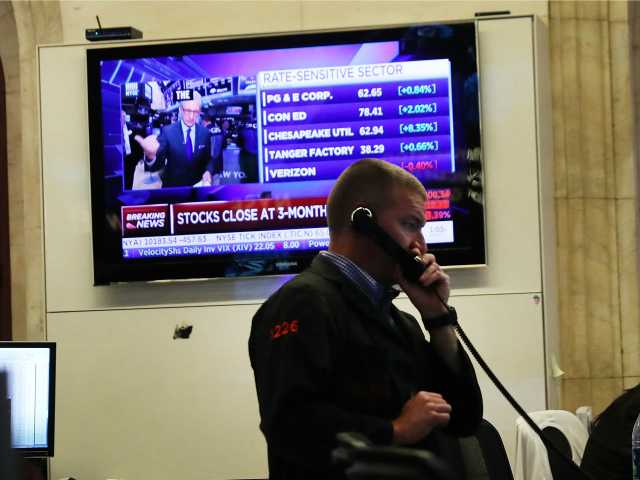Many of the wizards of Wall Street predicted stocks would slump if Donald Trump won the presidency. Now they’re worried that stocks could be vulnerable if President Trump’s agenda stalls in Washington, D.C.
Stocks suffered their “worst day of the year” on Tuesday–which is a scary way of saying that the major indexes suffered their first 1 percent decline in five months or 109 days. The consensus among Wall Street analysts puts the blame for the sell-off squarely on investors’ doubts about the ability for Trump to enact his agenda of regulatory reform, tax cuts, and infrastructure spending.
The Wall Street Journal’s Daily Shot chartist announced “The End of Trump-trade Tranquility.” A headline on MarketWatch warns, “Get ready for Trump Trade 2.0–a ‘deeper pullback’ for stocks.”
Why is Wall Street suddenly worried about Trump’s agenda stalling? The ongoing fight over the Republican healthcare bill is playing a significant factor. Many investors fear that Republican disunity on the healthcare bill could indicate that Trump will not be able to marshal support for his fiscal and regulatory agenda.
Those concerns are probably overblown, however. While Trump may face resistance from Washington’s Republican establishment on his infrastructure spending plans, as well as his trade and immigration reforms, the GOP is far more united when it comes to cutting taxes and reducing the regulatory burden on U.S. businesses. Even if the healthcare bill goes down, there is little reason to expect the things that were driving the so-called Trump Trade will also go down.
Put Tuesday’s sell-off in perspective. Just one day later, the Dow Jones Industrial Average and the S&P are basically unchanged. Even in the immediate aftermath of what appears to be a terrorist attack in London, stocks barely budged. In fact, much of the market is up Wednesday, with one company, footwear maker Nik, down by so much that it is dragging down the indexes. Even the stocks of big banks, which took the brunt of Tuesday’s sell-off, are steady. At least for now, the great Trump Trade sell-off has been put on hold.
Since 1928, there have only been 11 periods in which the S&P 500 has gone for 100 days or more without a 1 percent decline, according to analysts at Bespoke Investment Group. The last time it happened was in December 1995. And these long winning streaks for stocks do not typically precede sharp sell-offs. Bespoke’s chart shows that on average, stocks gained 0.65 percent in the week after the initial 1 percent drop, with stocks dropping on 3 out of the 11 instances. The average one-month return after the drop is a gain of 2.34 percent, with only two instances of a decline. Three months later, the average return is 2.44 percent, with only three declines.

COMMENTS
Please let us know if you're having issues with commenting.